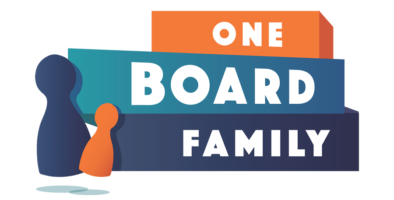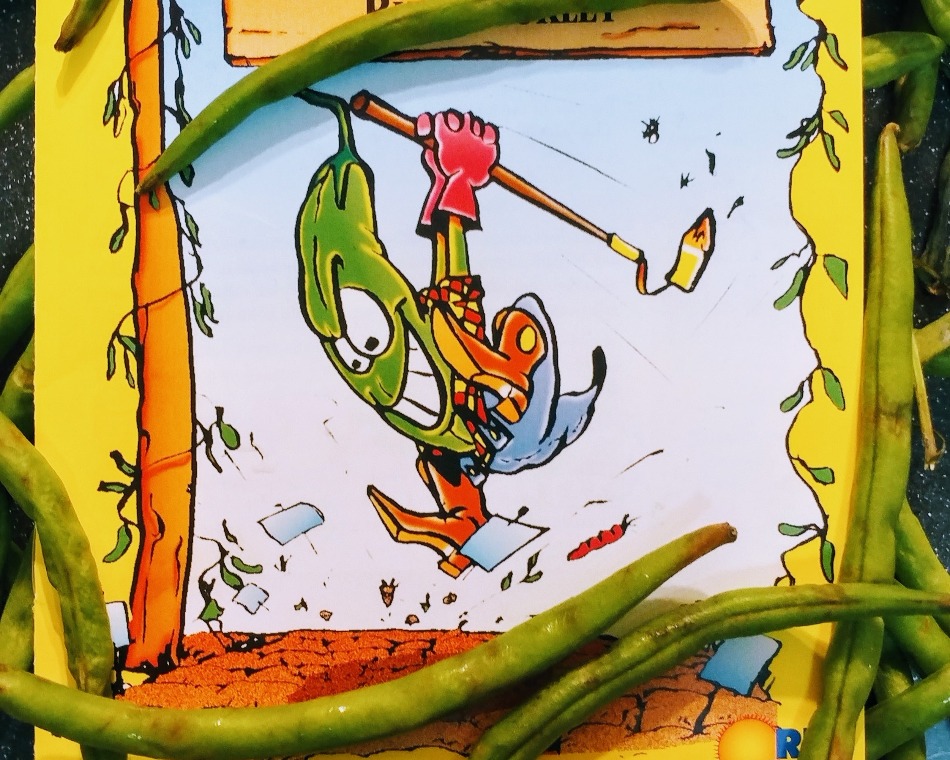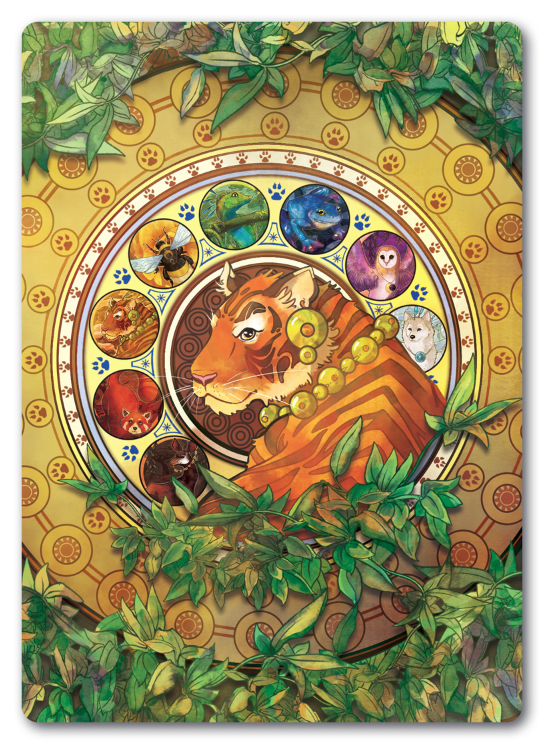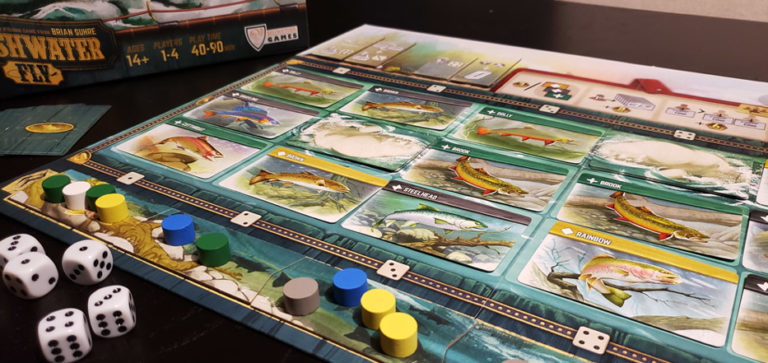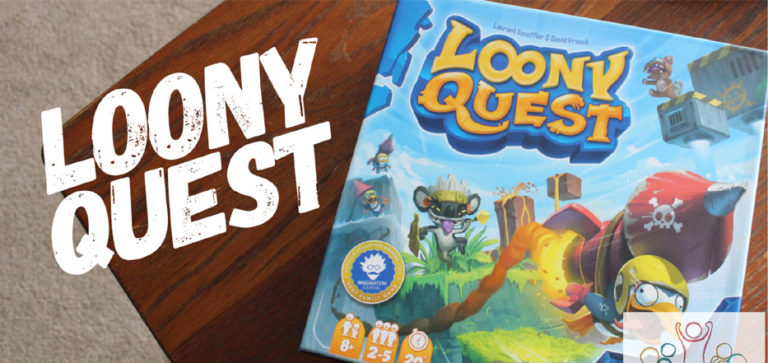1997. The English Patient wins the Oscar for Best Picture. ‘I Believe I Can Fly’ is a hit for R Kelly. The Lion King debuts on Broadway. And probably the most important of all – a card game about planting beans was first released.
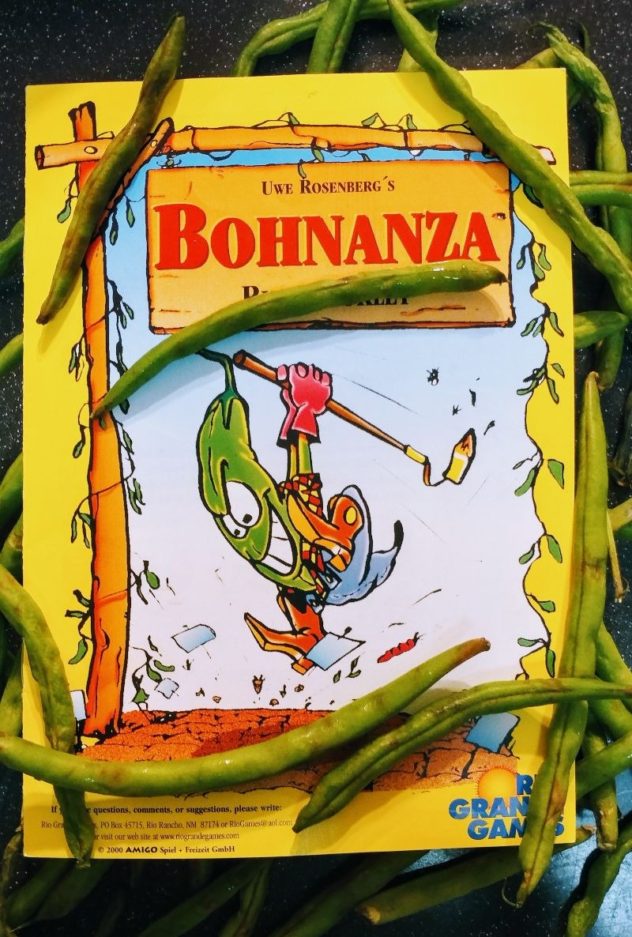
Yes, Bohnanza has been around long enough to buy itself a drink. And since its release, it has been translated into over a dozen languages with almost fifty editions listed on BoardGameGeek. The game is still getting new expansions, including this year’s Marco Bohno, which has you planting beans while also going on adventures. Obviously. Yet there are many in my board gaming circles that have never heard of this game, and I only managed to pick it up on a whim a few years ago. How is it that a game about beans has been simultaneously so popular and so obscure? Let’s find out.
Beans, Beans Everywhere
Bohnanza is a spin on your standard set collection game. The base game comes with a ton of cards, each decorated with art featuring one of several different types of beans in the game. You might have the floor-slipping wax bean, or maybe the Western-inspired blue bean, or maybe even the pugilist black eyed bean (I always thought they were peas, but whatever). Your job over the course of the game is to plant bean fields and harvest them at just the right time to make money. And, as usual, whoever ends the game with the most money wins.
Now once the cards are dealt, don’t go rearranging your hand like you’ve done in every game you’ve ever played. Instead, you have to keep the cards in the order that you received them. On your turn, you must plant the card that has been in your hand in the longest, whether you currently have that type of bean field or not. You can plant another bean if you desire, and then you flip over two cards. These cards must be planted by some player this round, so you can now begin to barter and beg to try to turn cards you may not want into something more valuable to you. Players can offer any cards from their hand to try to get what you have flipped over. Once those have cleared, the player draws three more cards, and the turn moves to the left.
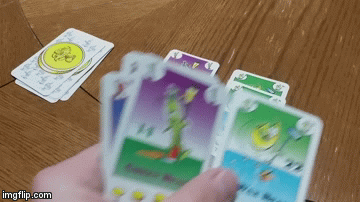
The inability to move the cards in your hand is where the crux of the strategy lies. You will spend the time between your turns trying to trade away cards you don’t want not only to get better cards for yourself, but also to ensure that you don’t have to harvest your beans early. You’re only allowed to plant two types of beans at once (with the option to purchase more ‘fields’ later in the game), so you must manage your hand properly so that you can plant more beans, which leads to more money.
Speaking of money, I also appreciate how that system works. Instead of little tokens that represent the money, players simply flip some of the cards from their set over to be their coins. This has an interesting impact in how the game progresses, as the three rounds of the game are ended when the deck runs out. All the of the cards that have been played for money or discarded are then shuffled and make the deck for the start of the second round. As many of the cards will be acting as money by the beginning of the third round, the timing can be much shorter and throw players for a loop as they don’t know exactly how much longer they will have to finish off their current bean fields.
Bartering Your Beans
The bartering mechanic in Bohnanza is also a really good part of this game. Most games often start off slowly, with some very basic trades being made from player to player. By the last third of the game, though, crazy trades are being offered and refused. Players that have been doing well the whole game will start to be ignored so that they don’t end up with as much money. Those who were timid in their trades before are now arranging ten card trades among multiple players. It’s a great evolution over the course of the game, and one I really enjoy.
With the basic concept of bean planting and harvesting, I believe this game works really well with younger gamers. The biggest issue will come with the bartering section, which may not work if your kids aren’t really used to that kind of thing or aren’t very skilled at it. The same could be said for adults, though – I know a few people who absolutely despise this game. It’s their loss, in my opinion.
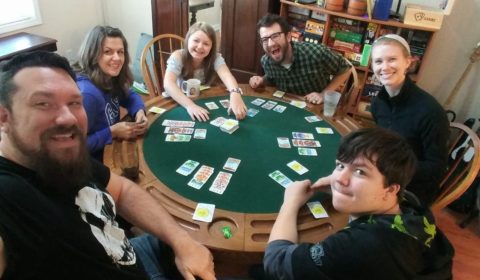
I think Bohnanza is a really solid game. It is one of the key members of my ‘card game box’ which my wife built me a few years back, and it’s probably the one we play the most. It’s so simple and just silly enough to get almost any player involved. I do think that the hand management can cause some issues for a few players at the beginning, but everyone should catch on within a few rounds. With some groups of friends, this game could also drag on a little, especially if they must cover every detail of a bargain or really like to wait other players out. But those are all extreme circumstances. Personally, I can see why this is a classic, even if others might think it doesn’t amount to a whole hill of beans.
Ha!
Pick up a copy of Bohnanza on Amazon or maybe even your FLGS.
Highs
- Plays well with a large number of people
- Quick to learn
- Game can be as competitive as you want it to be
Lows
- Not moving your cards can take some getting used to
- Some people are not going to like the bartering mechanic
